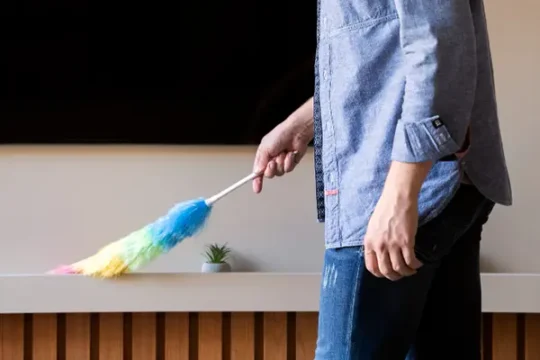Air ducts keep the indoor atmosphere comfortable but they can also become breeding grounds for various types of molds. Mold growth in air ducts is a common issue that can adversely affect both the health of occupants and the efficiency of HVAC systems. But how do you know if there is mold in air ducts? Let’s look at different mold types commonly found in air ducts to help you identify them and promptly call professionals for mold removal.
⦁ Aspergillus
Aspergillus is a common mold found in indoor environments, including air ducts. It appears in various colors, including green, white or yellow. While some species are harmless, others can produce mycotoxins, which are associated with several health risks, including allergy-type ailments and life-threatening general infections. Individuals with weakened immune systems may experience respiratory problems if exposed to high concentrations of Aspergillus.
⦁ Cladosporium
Cladosporium is a mold commonly found in air ducts, especially in warm and humid conditions. It produces toxins such as perylenequinones and enzymes, which can disrupt cell membranes. It appears as dark green or black spots and can cause respiratory issues in individuals with mold allergies. Exposure to it, especially long-term, can trigger severe asthma. Regular duct cleaning and maintenance of air ducts are vital to prevent the proliferation of Cladosporium.
⦁ Penicillium
Recognized by its distinctive blue or green appearance, Penicillium can flourish in air ducts with moisture-related issues. While some species are used to produce antibiotics, others can produce mycotoxins. Penicillium colonies typically produce a musty odor and thrive in ducts due to moisture issues. The mold can quickly spread through the air, releasing spores that can settle in air ducts and other surfaces.
⦁ Stachybotrys Chartarum (Black Mold)
Black mold or Stachybotrys Chartarum, is the most dangerous mold type and is notorious for its dark greenish-black color. It lives in air ducts as they are usually damp and water-damaged environments. Black mold produces mycotoxins; inhaling it can cause respiratory diseases, headaches, rashes, coughing and asthma attacks. If you find this mold in air ducts, call a professional to remove it and prevent health risks.
⦁ Alternaria
Alternaria is a common outdoor mold that can find its way into air ducts. It appears as brown or olive-colored spots and can trigger severe asthma and allergic reactions. This mould grows in environments that are consistently moist for extended periods, making air ducts and vents ideal breeding grounds. Proper ventilation and controlling moisture levels are essential to prevent Alternaria growth in air ducts.
⦁ Aureobasidium
Aureobasidium can appear pink, brown or black. It is often found on wooden surfaces and can thrive in air ducts with high humidity levels. Inhaling Aureobasidium spores can cause skin, eye and respiratory irritation. Proper ventilation and moisture control are effective preventive measures.
⦁ Chaetomium
This mould grows in water-damaged areas, including air ducts with leaks. It has a cotton-like texture and can appear in various colors, such as white, gray or brown. Exposure to Chaetomium may lead to skin and nail infections. You should reach out to air duct cleaning experts the moment you see it in the duct.
⦁ Fusarium
Fusarium is a mold that can colonize air ducts with water damage. This mold in air ducts forms white, pink, or red-colored colonies and can produce mycotoxins. Prolonged exposure may cause respiratory issues, eye infections, and skin irritation. Ensuring proper ventilation and addressing water leaks are essential to prevent Fusarium growth.
⦁ Mucor
This mould looks for spaces with high humidity and organic debris. It has a fuzzy appearance and can range in colors from white to grey. While mucor is generally harmless for healthy individuals, those with compromised immune systems may experience respiratory problems when exposed to high concentrations.
⦁ Rhizopus
Lastly, rhizopus is a mold commonly found in air ducts with organic material and high humidity. It has a fluffy texture and can appear in various colors. Like mucor, rhizopus poses a greater risk to individuals with weakened immune systems. However, proper ventilation and regular air duct maintenance can help prevent rhizopus growth.
So, How to Get Rid of Mold?
Mold growth can make the indoor environment toxic and cause many health problems, particularly for individuals with allergies or compromised immune systems. So, if you are a homeowner or have a commercial property, you should take proactive measures and get the air ducts and vents regularly inspected, cleaned and moisture controlled. You should also optimize ventilation to prevent the proliferation of mold in air vents and ducts.
Ensure your indoor air is safe for your family to breathe in; contact KW Duct Cleaning today for a consultation and free quote. We offer the best duct cleaning services around town.




